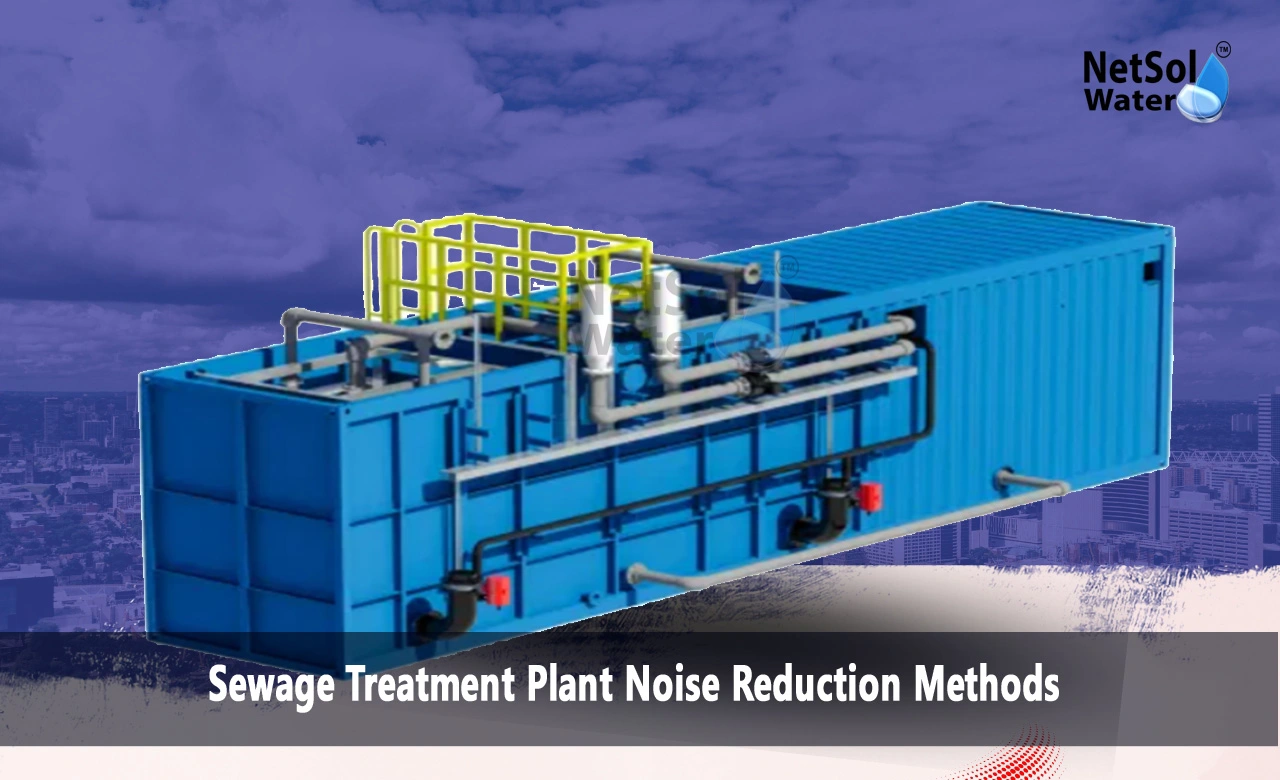What Methods can be Used to Reduce Noise in STP Plants?
Noise pollution typically goes neglected while evaluating environmental issues. But for individuals living near sewage treatment plants it becomes a daily conflict. These plants play an essential role in our communities yet they might become noisy neighbours. Let's discuss how we can quiet things down.
The Basics of Sewage Treatment Noise
We need to be aware of where all that noise originates before going into remedies. Sewage facilities work as systems with multiple moving parts. Pumps, motors, blowers, and other machinery run non-stop to keep everything flowing.
Common noise offenders include:
• Aeration systems: They use air bubbles to remediate wastewater, providing a steady bubbling noise.
• Pumps and motors: These emit low-frequency rumbles and vibrations.
• Trucks and vehicles: Constant traffic adds to the total noise level.
• Alarms and backup generators: These can be very disruptive.
The impact of this extends beyond plain inconvenience. Prolonged exposure to loud noise can cause hearing loss, stress, and other health difficulties. It also tends to depress property values in adjacent communities. That's why finding solutions to lessen sewage treatment plant noise means so much.
Noise Reduction Strategies
Now that we've discovered the problem, let's look at options to tone down the level. No single approach fits all situations, but combining several methods can make a huge difference.
1. Sound Barriers and Enclosures
Blocking noise at its source stands as one of the most straightforward techniques. We can achieve this in numerous ways:
Acoustic Panels: These specialty panels absorb sound waves lowering echoes and total noise levels. Workers can install them on walls, ceilings, and around noisy equipment.
Equipment Enclosures: Building enclosures around extremely loud machinery can greatly minimise noise transmission. Engineers can construct these with sound-absorbing materials for optimal impact.
Perimeter Walls: Constructing solid walls around the plant's perimeter helps restrict noise within the facility. Planners can make these more effective (and attractive) by integrating greenery.
2. Equipment Upgrades and Maintenance
Sometimes addressing noise at the source proves most effective:
Low-Noise Equipment: When replacing outdated machinery, opt for newer types developed with noise reduction in mind. Many manufacturers now provide "low-noise" or "silent" versions of pumps, blowers, and other equipment.
Regular Maintenance: Well-maintained equipment often runs quieter. Addressing them promptly prevents both noise issues and more significant malfunctions.
Vibration Isolation: Many noise problems arise from vibrations. Installing equipment atop vibration-dampening mounts or pads can dramatically minimise noise transmission through floors and walls.
3. Operational Changes
Sometimes it is not only about what equipment you use but how you use it:
Scheduling: If possible, schedule the noisiest operations during daytime hours when background noise levels peak and fewer persons are likely to experience disturbance.
Traffic Management: Implement techniques to limit vehicle noise. Designate certain routes to restrict engine braking and limit evening deliveries.
Staff Training: Educate plant staff on noise reduction strategies and stress the significance of following noise management protocols.
4. Advanced Technological Solutions
For facilities prepared to invest in cutting-edge solutions, certain high-tech possibilities exist:
Active sounds Control: This technology uses sound waves to cancel out undesired sounds. It works particularly effectively for low-frequency sounds that are tough to block with other approaches.
Intelligent Monitoring Systems: These systems use sensors to continuously monitor noise levels. They enable for real-time modifications to operations or activation of noise reduction mechanisms when needed.
5. Natural Solutions
Sometimes nature supplies the best solutions:
Green Buffers: Planting trees and shrubs around the perimeter of the plant helps absorb and deflect sound waves. This strategy has the extra benefit of boosting the facility's visual appeal.
Living Walls: Vertical gardens put on building exteriors give extra sound absorption while also helping to filter the air.
Water Features: The sound of flowing water helps hide less pleasant noises from the plant. It also produces a more aesthetically pleasant setting.
Conclusion
Reducing noise at sewage treatment plants offers a challenging task but one worth pursuing. By adopting a combination of physical barriers, equipment improvements, operational modifications, and novel technologies, we may drastically lessen the impact of these facilities on nearby populations.
To explore customised commercial RO plants, Industrial RO plants, ETP or STP solutions for your needs in your areas and nearby regions, contact Netsol Water at:
Phone: +91-965-060-8473, Email: enquiry@netsolwater.com



